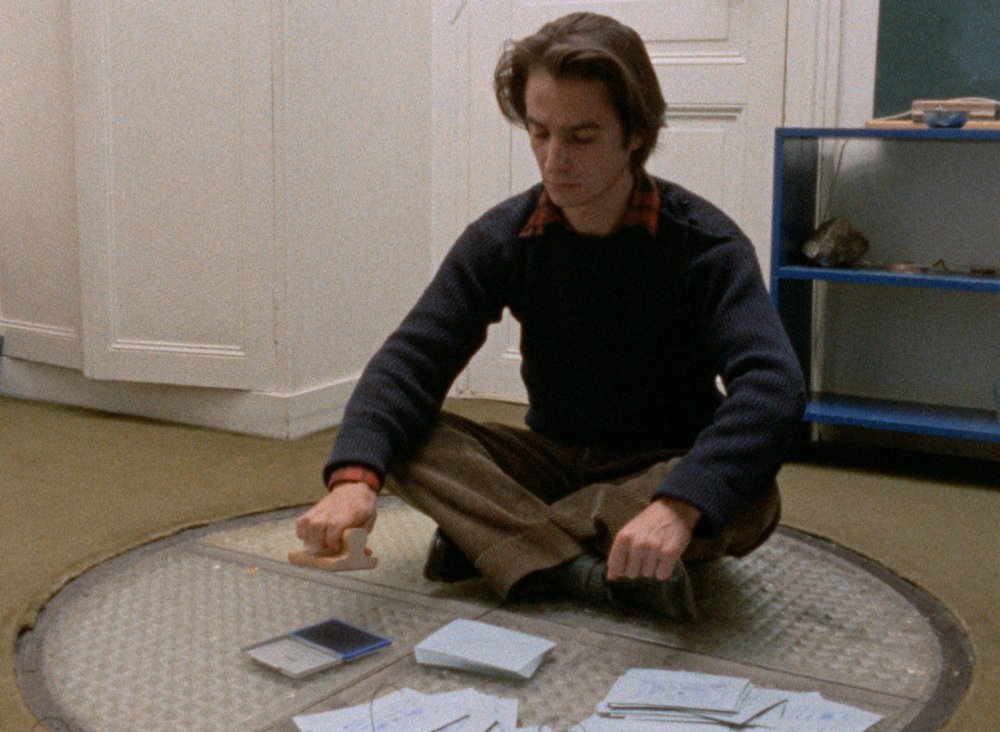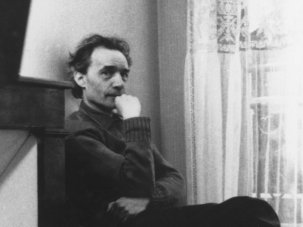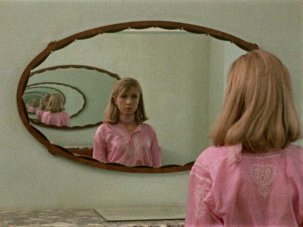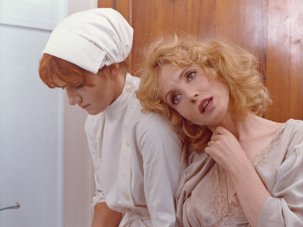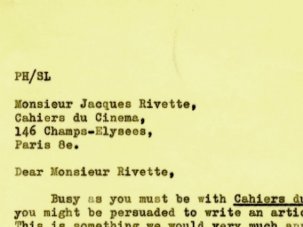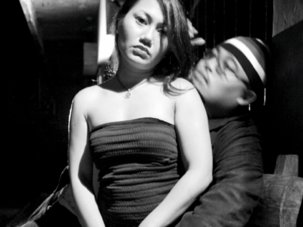On the plane going north from Gatwick, we rapidly entered negative light. Crossing the North Sea, the grey evening shroud of ocean turned into what seemed like a special effect, some trembling gelid slate-stone mass. So Norway was gloom already, and travellers studied the Perspex windows for the green glimmer of Northern Lights. You say that aircraft windows cannot be made of Perspex? I’m sure you’re right, just as I still don’t understand what causes Northern Lights after vain nocturnes above the Arctic Circle searching for them. But you can’t always see what you want, or be sure that you’ve seen it. I was flying to Tromsø, to see Out 1 in the northernmost screening that strange venture has ever had.
Strange? Perhaps that’s too romantic. One of the charms of the film is its 16mm matter-of-factness and the rather faded minestrone of its colours. Not to mention the quite determined way in which ‘action’ is dealt with gradually or at a calm distance, to avoid undue excitement. Still, it has never been an easy or straightforward film and it barely made its first projection in public, in Le Havre, on 9 October 1971. That’s a long time ago, and it was days after a cyclone in the Bay of Bengal that killed 10,000 people – or, to be more precise, about 10,000 people. It was also just a week after Disney World opened in Orlando, Florida – Out 1 could have been a showstopper if it had played there. Never mind, we can’t have everything. It’s enough that we can’t often have Out 1.
As readers of Sight & Sound, do you know what Out 1 is, or wanted to be? It is a movie, made by Jacques Rivette, lasting 12½ hours, whenever it plays. It has never had what used to be called a ‘release’ just because distributors, exhibitors and audiences (those stock pieces in the old board game, The Movies) decided that it wasn’t possible, or reasonable, or manageable. After all, 12½ hours is a long time – isn’t it? I ask because some of us do sleep that long, while others can sit looking out of the window for half a day and decide that nothing much has happened. Twelve-and-a-half hours could be a long time, too long, if you are waiting to go to the bathroom. But in terms of sidereal time, or if you’re waiting to die, it’s not really so long. It just seems long if you’re contemplating a movie.
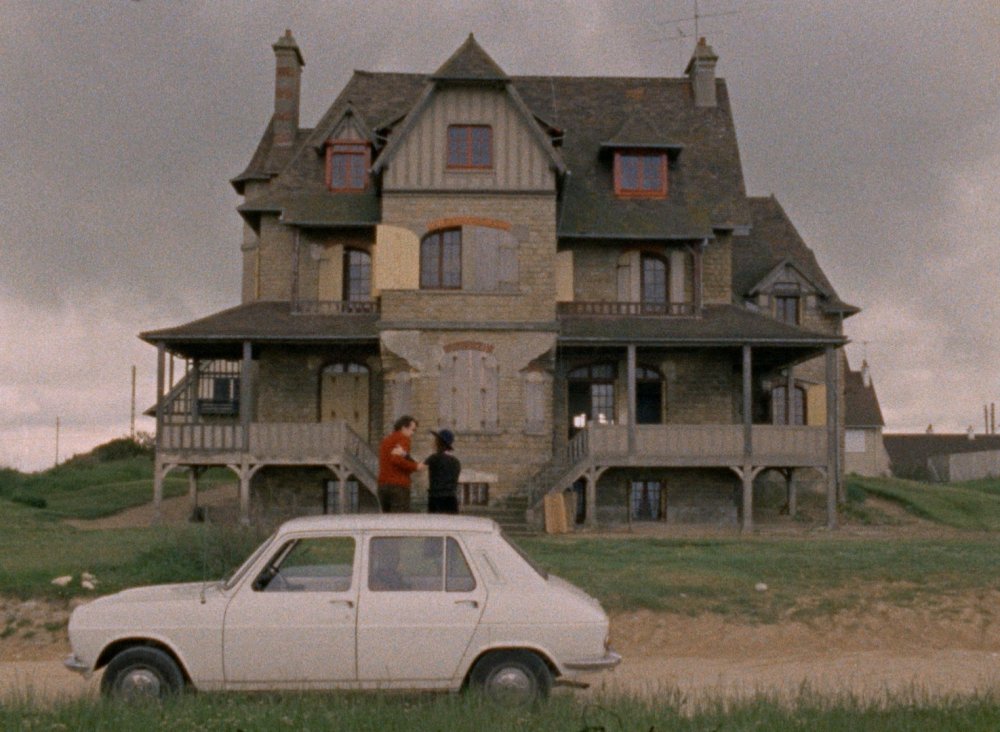
Out 1 (1990)
Rivette could have seen this in advance even if his quite vivid cast hardly appreciated the scale of the enterprise as they shot it in just six weeks. The director hoped it would play on theatre screens. In fact, commercial heads got together to edit it down to a mere four-and-a-half hours as 1973’s Out 1: Spectre (the ghost of itself). But that didn’t work either and was easily disdained as frivolous by purists.
So, over the years, it was very hard to see Out 1. There were festival screenings at Berlin and Rotterdam, but not until 2004. It played at London’s National Film Theatre, at the Anthology Archive and the Museum of the Moving Image in New York, and in Vancouver in 2006. Those screenings were said to be ‘packed’, for reputation had glorified the film, rather in the way that prolonged absence made Hitchcock’s Vertigo not just more desirable, but a champion in the film magazine mania for lists (you know who we’re talking about).
These showings were projections of 16mm film, a service that is disappearing. But in 2015, Out 1 was restored as a digital package, and it has played in the last six months at the Brooklyn Academy of Music and in London at the Prince Charles Cinema. Some of those screenings were full, or close to it, for by then in cultured metropolises Out 1 had enough of a legendary reputation – as glory, monster or both – to sell out for a few screenings. Not in Tromsø, where I was going to introduce the film in its ultima thule presentation.
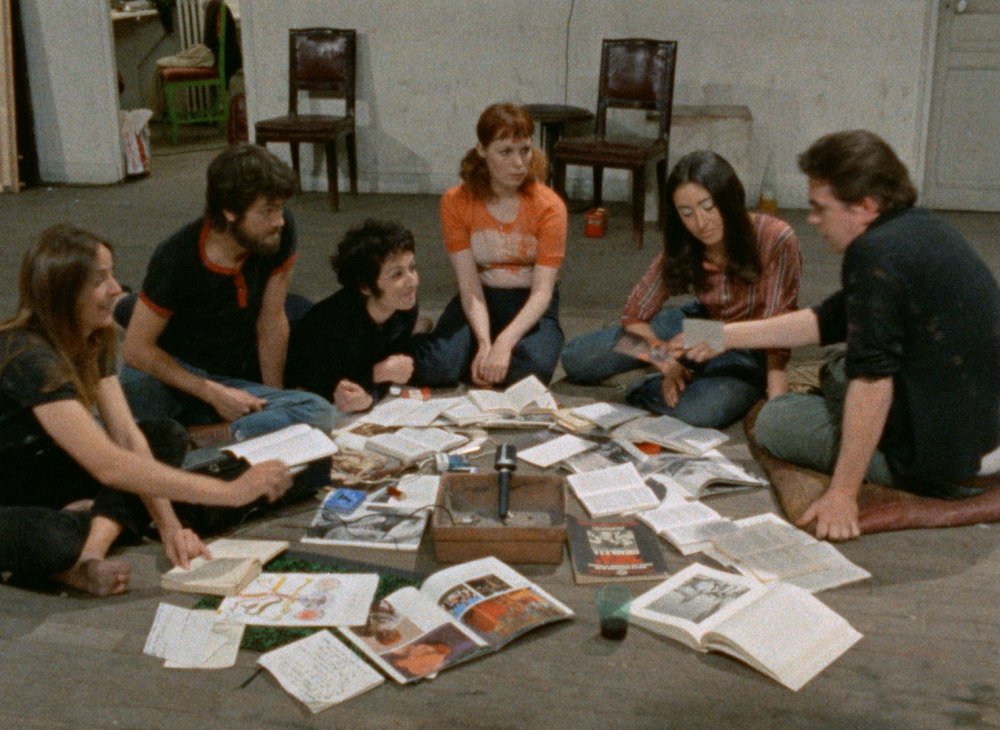
On 16 January 2016, at 3.30 p.m. in Tromsø, the day’s light had just given up. From about 9am onwards until 3pm, night had been replaced by a wan, bluish light that had now yielded so that the temperature could sink back below freezing point. But that did not matter in the Fokus 4 auditorium, below ground, in a small, steeply raked theatre with blood-red seats of sculpted comfort and in a state of cosy upholstery that might have been imported from Las Vegas or Dubai. There were 12 people in the audience – which meant that I made the total 13.
You are going to sigh gently and politely over that pitiful number (please don’t minimise the ineptness of my introduction or the wondering ‘Who?’ that could have kept crowds away), but in this case 13 is not so plain or simple or without a hint of sinister allure.
To explain that, I must say something about Out 1. Set in the Paris of the early 1970s, it involves two altruistic theatre groups, both of them rehearsing plays by Aeschylus, Seven Against Thebes and Prometheus Bound. For long periods we see not just these rehearsals, but the rather extended exercises of the two acting groups, often involving improvisation or intense mimed gesture to convey the meaning of the plays. But then appears a young male character, Colin (Jean-Pierre Léaud), a rapt drifter and a con who believes there may be a real-life 13 at work – that is to say, a conspiratorial group, seeking to control or direct the functioning of society at large – or is it just to substantiate that perilously slight and implausible thing, existence?
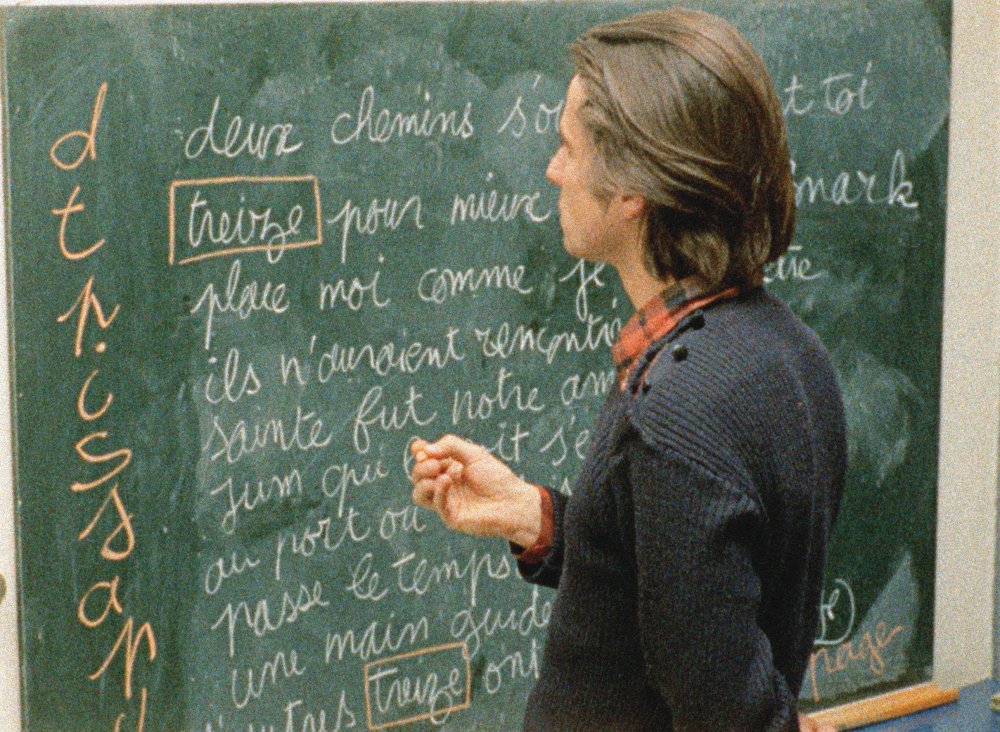
This motif comes from Balzac’s History of the Thirteen, but it also conforms with the paranoia in Rivette’s first film, Paris nous appartient (1961), that believes some conspiracy lies behind the uneasiness felt in a world where yet another play (Shakespeare’s Pericles) is being prepared. In Out 1 that earlier paranoia has been sweetened or iced by a vein of whimsical comedy in what is almost a parody of paranoia, or in the zest of playfulness that makes the entire action resemble an elaborate and lugubrious game. One of the clues to Out 1 is the way a very deliberate, grand-scale plot does not take itself too seriously. You would think this long a project required exceptional intent, diligence and stamina (in case the viewers doze off), but here the mood is not just relaxed, it’s a little sleepy or sly. So if you have to be ordered to watch Out 1, you may want to be ready to tease your own prolonged attention.
In introducing, or proposing the screening on 16 January, I encouraged the Tromsø dozen not to be intimidated. They might slip out for a few moments now and then on bathroom duty or to see a man about a dog. There is something about Out 1 that admits, or permits, the lifelike habit of missing a few things here and there. After all, we can be making love to someone, or even murdering them, and not quite hear what they say or catch the expression on their face. Movies seem to be arrangements of attention, but Rivette was one of those directors who saw that in passing time some things could pass by, precious in the dark, not so much unnoticed as missed. “Did you see the Northern Lights?” someone might ask. “They were behind you.” Never mind, next time.
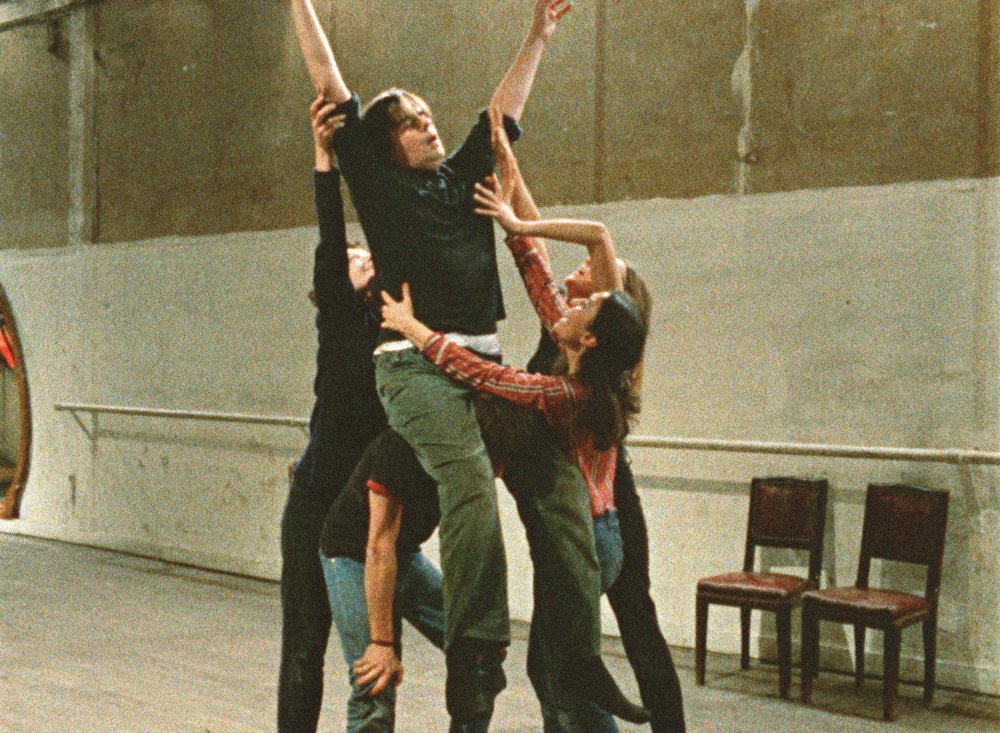
Out 1 (1990)
As it is, many of the people in the film’s acting troupes are child-like in their absorbed preparation. And like children they seem unaware that their performance may never happen. It is especially appealing to see Michael Lonsdale – young but already so weighty and portentous he’s comic – as one of them. So intent on their work, these actors could be like the phantom operatives from Feuillade’s films. Like actors in preparation they are so absurdly but appealingly fixed on their date, their opening, their release, that life has slipped away.
This apprehensive condition makes a delightful contrast with the existence of those figures who do seem to be part of the 13. These are, if you like, amateur actors from life’s untidy play. But they are given a piquant professional edge as befits appointed characters in a plot – which is a way of describing all figures in a drama. So Leaud’s Colin is driven, fatuous but unquestioning of himself – he may be mad but he is decisive. Bulle Ogier’s Pauline, often in a candy-pink sweater, with little to do but be seductively focused, is like a spy taking pains to pass unnoticed or unidentified – but a failure, just because she is so remembered. Françoise Fabian as Lucie de Graffe is the most alert and best dressed character in the film, dipped in adrenaline and as dangerous as a femme fatale in a Fritz Lang picture.
But the most vivid person in view, the tigress in a panorama of sleepy pussy cats, is Frédérique (Juliet Berto). She is a vagrant, a roaming petty thief, a casual seductress, an unpaid hooker, an artful dodger, not clearly of the 13 but the intruder who steals letters which may be part of the communication system that holds the conspiracy in place. Berto makes her mercurial, feral, reckless, amoral and uncontained by any scheme of meaning. In a film that glorifies actors and acting, she is the aberrant life force that simply exists and who does whatever the moment inspires. It is as if she is unscripted. As you might imagine, she comes to a… no, I shouldn’t complete that admission. This is no place for a spoiler, even if we are considering a movie that believes passionately in the lack of resolution that obtains in life. Frédérique is a sorcerer’s apprentice who has not yet seen she might be a sorceress herself.
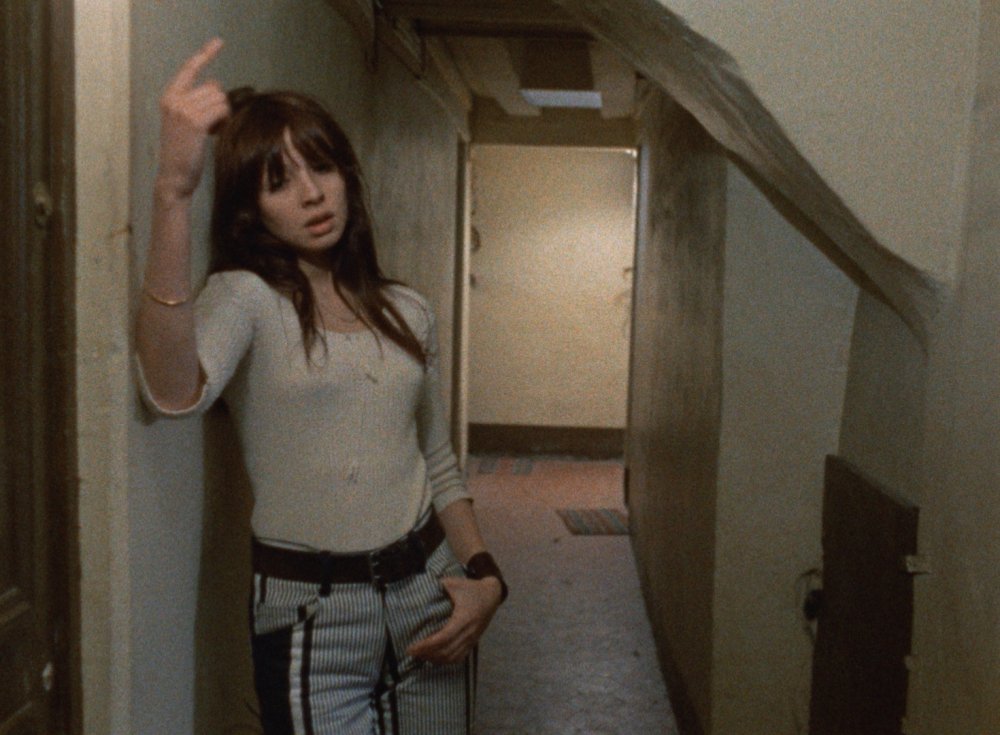
Juliet Berto’s ‘aberrant life force’ Frédérique in Out 1
The Tromsø screening of Out 1 was spread over two days, the 19 and 20 of January. Before the first screening, the director of the Tromsø festival, Marthe Otte, had explained to the audience how the screenings would work, and how brief intervals would protect their tender organisms. In a spirit of play, I confided that Martha had lied to them. Instead, I suggested that – as if in a Lang film – as darkness took over the Fokus 4 so manacles would spring from their arm rests imprisoning them for the two-day duration. And in a good-natured way some of the 12 chuckled.
Then, before the second day – by which time the 12 had become 15! – I spoke about the fascinating and provocative nature of lost or impossible films. I mentioned Greed, The Magnificent Ambersons, The Other Side of the Wind or even Vertigo in its Elba era. I wondered if, even now, Martha (not there on that second day) might be planning a technical breakdown, an interruption at the 11th hour so that these pilgrims could totter away with the ecstatic if enraged word-of-mouth that saw Out 1 in Tromsø – or 11 hours of it, so that the resolution remained unachieved or protected.
One member of our audience said he appreciated the screening being broken into two days, just because the time between the two parts had proved to be rich in dreams about how Out 1 might end – or whether it had even properly started yet. For true duration in a movie does reveal just how far empty, unoccupied life, waiting for ‘it’ to start, is already a kind of movie, or its rehearsal. After all, if you reckon to get as far as the age 85 you are already in… wait a moment while I work this out… you are in a 744,600-hour movie, in which melodrama is a Juliet Berto-like swimmer in a Pacific-wide doldrum.
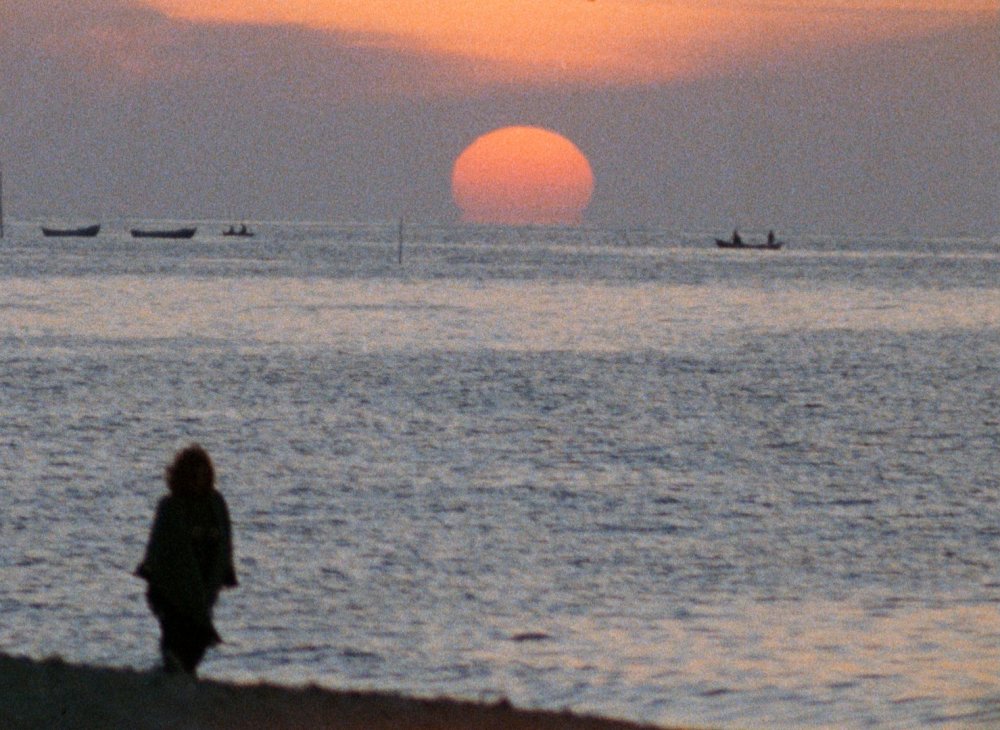
Out 1 (1990)
All is lost, but waiting to be found. We are all alive while waiting to die. We are somewhere in space, wondering if a message will bounce back to us, or whether it will be the reflection of our own waiting face, looking at the mirror for… an answer. Out 1 knows that the suspense of all narratives and their duration keeps you alive but is too cool to forsake boredom.
Chances are, I said to myself in the gloom of Tromsø, that, coming up on 75, this could be the last time I will see Out 1 – though I would try again if it meant adding a few more hours to my allotment. It is a profound, dormant monster of a film, and I am not going to try to tell you or myself that it is ‘great’ or ‘stunning’ or ‘riveting’ (one of my favourites), let alone ‘a tour de force’, a ‘masterpiece’, a ‘must see’, or even… good.
You don’t have to see Out 1, and in the way of our medium’s great release pattern the pressure to see it as a theatre performance (with ‘riveting’ or ‘tour de force’ pennants ragged in the wind of fashion) is slight, even if it finds a way to be a box set (and so much shorter than the Sopranos, Breaking Bad or all the others). In terms of contemplating the philosophical nature of film performance – the ontology, if you like – Out 1 is as rewarding as anything I have seen lately. But it is, in the best sense – and there is a best sense after all the din of thousands of ‘stunning’s – boring. Just like life, until you think you see a Berto waving from the waves before she goes down a third time.
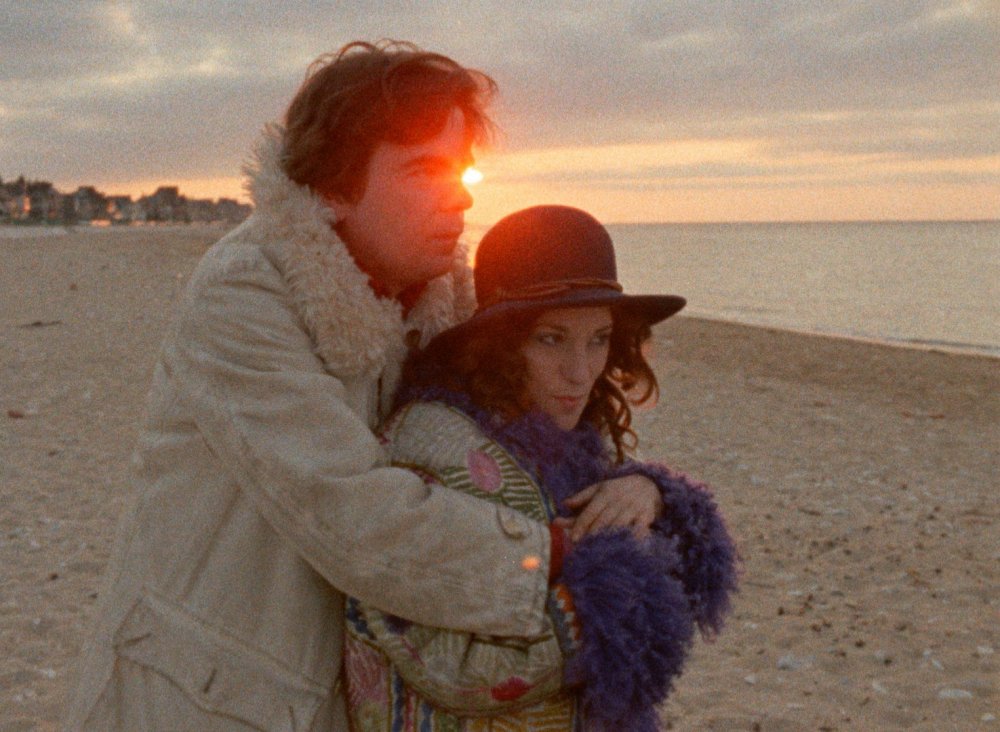
Of course, Berto was rescued (though she is gone now). As I said in Tromsø, or tried to say, the achievement of a 12½-hour film is in preparing you for one that is only 192 minutes, flashing by, as lovely as a kingfisher or the Northern Lights (lovely is my other favourite, and a tricky word to define – so just keep using it). For after he had done Out 1, Rivette made Céline and Julie Go Boating (1974), with Berto as Céline and Dominique Labourier as Julie.
This is a droll picnic of a mystery film in which an earnest librarian and a daft cabaret magician, the steadfast and the streaky, become not just pals but fellow-questers and moviegoers, always ready for the continuous performance at 7 bis rue du Nadir-aux-Pommes where sinister attendants (one of whom looks a lot like Bulle Ogier – a readiness that actress has never lost), and in whom colour is being drained away to be replaced by RKO 1949 black-and-white, are planning to terminate the child Madeleine (a tribute to Vertigo?). And those two girls sit side-by-side watching the show, giggling and gasping, as if it might, and should, go on forever, so long as it never attempts to be ‘stunning’. You can’t do stunning after you’ve been stunned. You can only dream of seeing Out 1 so long as you’ve never seen it.
In the forthcoming March 2016 issue of Sight & Sound
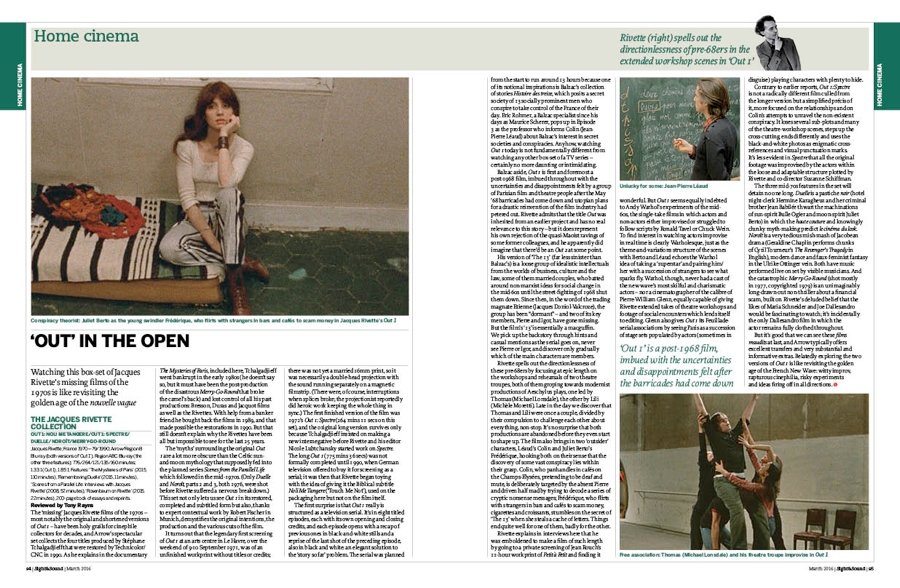
‘Out’ in the open: the Jacques Rivette collection
Watching the box-set of Jacques Rivette’s missing films of the 1970s is like revisiting the golden age of the nouvelle vague. By Tony Rayns.
-
The Digital Edition and Archive quick link
Log in here to your digital edition and archive subscription, take a look at the packages on offer and buy a subscription.




